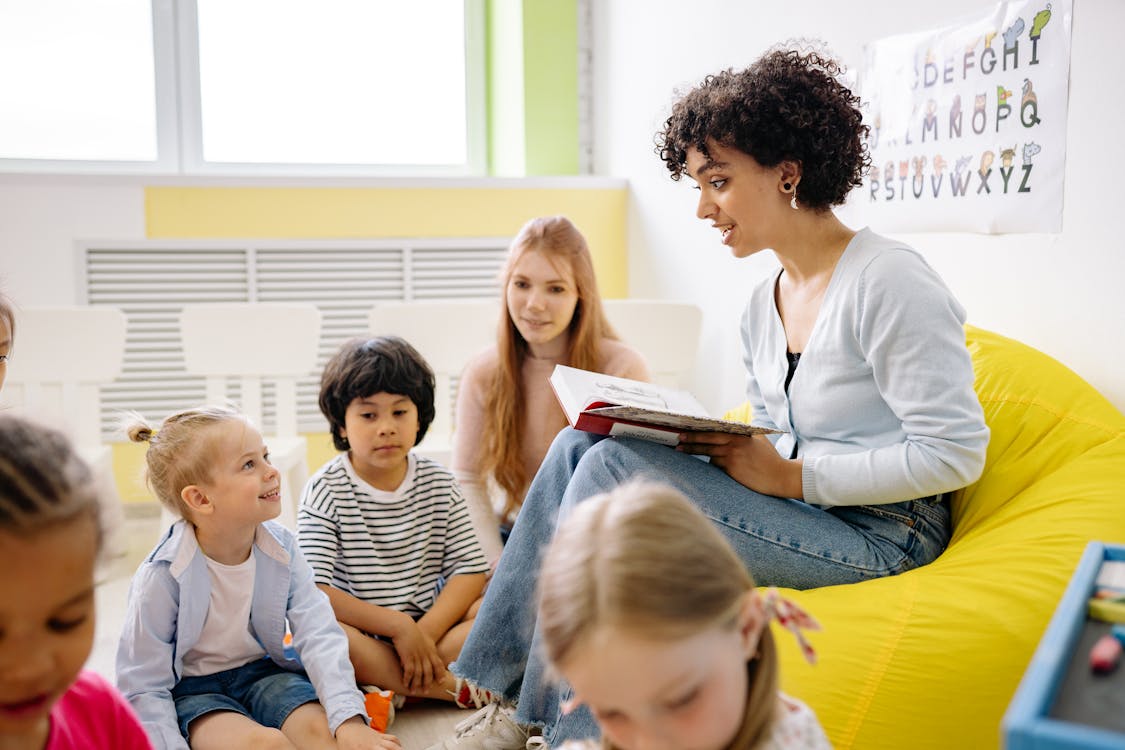Table of Contents
- Why Teaching Conflict Management is Crucial in Today’s World
- Understanding the Roots of Conflict
- Core Skills for Peaceful Conflict Resolution
- Strategies for Teaching Conflict Management Effectively
- Creating a Culture That Supports Peaceful Resolution
- Overcoming Challenges in Teaching Conflict Management
- Conclusion: Building Bridges, Not Walls
Teaching Conflict Management: Resolving Disputes Peacefully
Ever found yourself stuck in a frustrating disagreement, wishing there was a magic wand to just make it disappear? Whether it’s a squabble between kids over a toy, a tense standoff with a colleague, or a misunderstanding with a loved one, conflict is an undeniable, often uncomfortable, part of the human experience. But what if, instead of dreading these moments, we saw them as opportunities? Opportunities to understand each other better, strengthen relationships, and find creative solutions? That’s where teaching conflict management comes in. It’s not about eliminating conflict – that’s impossible – but about learning how to navigate it constructively and achieve peaceful resolution.
This article dives deep into the art and science of teaching conflict management. We’ll explore why it’s such a vital skill in today’s interconnected world, break down the core components needed for resolving disputes peacefully, and offer practical strategies and actionable insights for fostering these skills in children, teenagers, and adults. Get ready to transform conflict from a source of stress into a catalyst for growth!

Why Teaching Conflict Management is Crucial in Today’s World
Let’s face it: conflict isn’t going anywhere. From playground disagreements to boardroom battles, from family feuds to international tensions, the ability to manage disagreements effectively is more critical than ever. Unresolved or poorly managed conflict doesn’t just disappear; it festers, leading to significant negative consequences:
- Personal Stress and Health Issues: Constant tension takes a toll on mental and physical well-being.
- Damaged Relationships: Misunderstandings and resentment can irrevocably harm connections with family, friends, and colleagues.
- Decreased Productivity and Morale: In schools and workplaces, unresolved disputes create toxic environments, hindering learning and performance.
- Escalation to Aggression or Violence: In worst-case scenarios, poorly handled conflict can lead to harmful behaviours.
Conversely, equipping individuals with effective conflict resolution skills yields tremendous benefits. When people learn to handle disagreements constructively, they develop:
- Improved Communication Skills: Learning to express oneself clearly and listen actively.
- Enhanced Empathy and Understanding: Gaining the ability to see situations from multiple perspectives.
- Stronger Problem-Solving Abilities: Focusing on collaborative solutions rather than winning or losing.
- Increased Resilience: Developing the capacity to bounce back from challenging interactions.
- More Positive Relationships: Building trust and mutual respect through successful navigation of differences.
Teaching conflict management isn’t just a ‘nice-to-have’; it’s a fundamental life skill that empowers individuals of all ages to build healthier relationships and contribute to more peaceful homes, schools, workplaces, and communities.
Understanding the Roots of Conflict
Before we can effectively manage conflict, we need to understand where it comes from. Conflicts rarely arise out of thin air. They typically stem from a combination of factors:
- Misunderstandings & Miscommunication: Assumptions, unclear language, or failure to listen properly.
- Differing Needs, Values, or Goals: What’s important to one person may clash with another’s priorities.
- Resource Scarcity: Competition over limited resources like time, money, attention, or materials.
- Personality Clashes: Fundamental differences in temperament or working styles.
- Past Baggage: Unresolved issues from previous interactions bleeding into the present.
- External Stressors: Pressure from work, finances, or personal issues making individuals more irritable or less patient.
It’s also helpful to recognize the Conflict Escalation Cycle. Often, a small disagreement triggers a defensive reaction, which prompts a counter-reaction, leading to raised voices, blame, and further hostility. Understanding this potential spiral helps us intervene early before things get out of hand.
Furthermore, people have different default styles of handling conflict (often based on the Thomas-Kilmann Conflict Mode Instrument): Avoiding (ignoring the issue), Competing (win-lose), Accommodating (giving in), Compromising (meeting halfway), and Collaborating (win-win). Recognizing our own style and the styles of others provides valuable insight into conflict dynamics. Understanding the ‘why’ and the ‘how’ of conflict formation is the crucial first step towards effective intervention and peaceful resolution.
Core Skills for Peaceful Conflict Resolution
Resolving disputes peacefully isn’t about innate talent; it’s about learning and practicing specific skills. These form the bedrock of effective conflict management. Let’s break them down:
Active Listening: More Than Just Hearing
This is arguably the most crucial skill. Active listening means fully concentrating on what the other person is saying – both verbally and non-verbally – to understand their message and perspective completely. It’s about listening to understand, not just to reply.
- Key Techniques: Pay full attention (minimise distractions), use non-verbal cues (nodding, eye contact), paraphrase what you heard (“So, if I understand correctly, you’re feeling frustrated because…”), ask open-ended clarifying questions (“Can you tell me more about that?”), and summarise their points to ensure understanding.
- Why it Matters: It de-escalates tension by showing respect and genuine interest. It prevents misunderstandings and helps uncover the underlying needs and feelings driving the conflict.
- Actionable Tip: Practice paraphrasing during everyday conversations. Try summarizing a friend’s story back to them before sharing your own thoughts.

Effective Communication: Expressing Needs Clearly and Respectfully
How we express ourselves during conflict is just as important as listening. The goal is to share our perspective, feelings, and needs without blaming or attacking the other person.
- Key Techniques: Use “I” statements instead of “You” statements (e.g., “I feel overlooked when I’m interrupted” vs. “You always interrupt me”). Express feelings constructively (“I’m feeling concerned about the deadline” vs. “You’re making us late!”). Be assertive – state your needs clearly and respectfully, distinguishing this from aggressive (hostile, blaming) or passive (avoiding, resentful) communication. Pay attention to tone of voice and body language – ensure they align with your words.
- Why it Matters: It reduces defensiveness and encourages the other person to listen. It clarifies your position without escalating the conflict.
- Actionable Tip: Before a potentially difficult conversation, jot down your key points using “I” statements focusing on your feelings and needs.
Emotional Regulation: Keeping Cool Under Pressure
Conflicts often trigger strong emotions like anger, frustration, or anxiety. Letting these emotions hijack the conversation rarely leads to a positive outcome. Emotional regulation is the ability to manage these feelings effectively.
- Key Techniques: Recognize your personal triggers – what situations or behaviours tend to set you off? Learn calming strategies: deep breathing, taking a short break (“Can we pause for five minutes?”), counting to ten, engaging in brief mindfulness. Acknowledge the emotion without letting it dictate your response.
- Why it Matters: It prevents saying or doing things you’ll regret. It allows for clearer thinking and more rational problem-solving. It models composure for the other person.
- Actionable Tip: Identify one or two calming techniques that work for you and consciously practice them when you feel yourself getting agitated, even in minor situations.
Empathy and Perspective-Taking: Seeing Through Others’ Eyes
Empathy is the ability to understand and share the feelings of another. Perspective-taking is the cognitive ability to understand their thoughts, motives, and viewpoint. Both are vital for bridging divides.
- Key Techniques: Genuinely try to understand *why* the other person feels or thinks the way they do, even if you disagree. Ask questions aimed at understanding their perspective (“What does this situation look like from your side?”). Acknowledge their feelings (“I can see why you would be upset about that”).
- Why it Matters: It builds connection and trust. It often reveals common ground or underlying needs that weren’t initially apparent. It transforms the dynamic from adversarial to collaborative.
- Actionable Tip: During your next disagreement, consciously pause and ask yourself: “What might be motivating this person? How might they be feeling right now?”
Collaborative Problem-Solving: Finding Win-Win Solutions
The ultimate goal of conflict resolution is often to find a solution that addresses the core needs of everyone involved. This requires shifting from a competitive mindset to a collaborative one.
- Key Techniques: Clearly define the problem *together*, focusing on the issue, not the people. Brainstorm potential solutions without judgment initially – get all ideas on the table. Evaluate the options based on fairness and feasibility. Choose a solution that is mutually agreeable (or the best possible compromise). Focus on underlying interests (the ‘why’ behind the demand) rather than fixed positions (the initial demand). Create a plan for implementation.
- Why it Matters: It leads to more sustainable and satisfying outcomes. It strengthens relationships by demonstrating mutual respect and a commitment to fairness.
- Actionable Tip: Use a simple worksheet or mental checklist for problem-solving: 1. Define problem, 2. List interests, 3. Brainstorm options, 4. Evaluate & Choose, 5. Plan action.

Strategies for Teaching Conflict Management Effectively
Knowing the skills is one thing; teaching them effectively requires tailored approaches and engaging methods. The strategy will differ depending on the age group and context.
For Children: Laying the Foundation
Early childhood is the ideal time to introduce the basic building blocks of peaceful resolution.
- Methods: Use age-appropriate stories, puppet shows, and songs that model positive social interactions and problem-solving. Employ simple role-playing for common scenarios (e.g., sharing toys, taking turns).
- Focus: Teach basic emotion words (“happy,” “sad,” “mad,” “scared”) and encourage children to express their feelings verbally. Establish clear, simple rules like “Use your words, not your hands” or “Ask first.” Introduce concepts like empathy (“How do you think Maya felt when you took her crayon?”), sharing, and apologizing sincerely.
- Example Activity: Create a designated “Peace Corner” or “Cool-Down Spot” where children can go to calm down when upset, perhaps with calming tools like soft toys or picture books about feelings. Practice simple problem-solving steps like: 1. How do you feel? 2. What’s the problem? 3. What can we do?
For Teenagers: Navigating Complex Social Dynamics
Adolescence brings more complex social interactions, peer pressure, and heightened emotions. Conflict resolution education needs to address these realities.
- Methods: Engage teens with more complex role-playing scenarios relevant to their lives (e.g., disagreements with friends, romantic relationship conflicts, cyberbullying, peer pressure). Facilitate discussions about different conflict styles and their real-world consequences. Introduce basic mediation principles where they can help peers resolve disputes.
- Focus: Deepen understanding of active listening and assertive communication (“I” statements). Explore empathy in more depth, including understanding diverse perspectives. Teach strategies for managing intense emotions and stress. Discuss online conflict and digital citizenship.
- Example Activity: Implement a peer mediation program where trained students help others resolve conflicts peacefully. Analyze case studies of teen conflicts from literature or current events.
For Adults: Enhancing Skills in Work and Life
Adults often need to unlearn less effective habits and refine their skills for professional and personal contexts.
- Methods: Offer workshops, training sessions, or coaching focused on workplace conflict, negotiation, and mediation skills. Use case studies specific to professional environments (e.g., team disagreements, managing difficult clients). Encourage self-reflection on personal conflict styles and triggers.
- Focus: Apply core skills (active listening, assertive communication, emotional regulation, empathy, problem-solving) to complex situations like performance reviews, team disagreements, inter-departmental conflicts, and family disputes. Develop advanced negotiation and mediation techniques. Foster an understanding of how organizational culture impacts conflict.
- Example Activity: Conduct a workshop analyzing common workplace conflict scenarios and role-playing effective responses using collaborative problem-solving models. Facilitate discussions on giving and receiving constructive feedback.
Key Teaching Methods Across All Ages
- Role-Playing: Provides a safe space to practice skills without real-world consequences.
- Storytelling & Case Studies: Makes concepts relatable and allows for analysis of different approaches.
- Group Discussions: Encourages sharing perspectives and learning from peers.
- Skill-Building Exercises: Offers focused practice on specific techniques (e.g., active listening drills, writing “I” statements).
- Modeling: Educators, parents, and leaders demonstrating constructive conflict resolution in their own interactions is incredibly powerful.
- Mediation Training: Equipping individuals with the structured process to help others resolve disputes.
- Feedback: Providing constructive feedback during practice activities helps learners refine their skills.
Creating a Culture That Supports Peaceful Resolution
Teaching individual skills is essential, but creating an environment where these skills are valued and practiced is equally important. Whether at home, school, or work, fostering a culture of peaceful resolution requires conscious effort.
- Establish Clear Expectations: Define shared norms and guidelines for how disagreements are handled respectfully.
- Provide Safe Spaces: Ensure people feel safe to voice concerns and engage in dialogue without fear of retribution. This includes clear reporting mechanisms for serious issues.
- Model the Behaviour: Leaders, teachers, and parents must consistently model effective conflict management themselves. Actions speak louder than words.
- Integrate into Policies: Incorporate conflict resolution principles into school discipline policies, workplace procedures, or family rules.
- Provide Resources & Support: Offer ongoing training, access to mediation services if needed, and readily available information on conflict resolution techniques.
- Celebrate Success: Acknowledge and appreciate instances where conflicts were resolved constructively. This reinforces the desired behaviour.
A supportive culture makes it easier for individuals to apply their learned skills and reinforces the message that peaceful conflict resolution is the expected and valued approach.
Overcoming Challenges in Teaching Conflict Management
Implementing conflict resolution education isn’t always easy. Be prepared for potential hurdles:
- Resistance: Some individuals may be skeptical, set in their ways, or see conflict resolution as “soft.”
- Deep-Seated Habits: Unlearning long-standing patterns of aggression or avoidance takes time and effort.
- Time and Resource Constraints: Finding time in curricula or work schedules, and funding for training or materials can be challenging.
- Cultural Differences: Approaches to conflict vary across cultures; teaching must be sensitive to these nuances.
- Complex Situations: Some conflicts involve deep-seated issues, power imbalances, or high emotional intensity that require more than basic skills, potentially needing professional intervention.
Strategies for Overcoming Challenges: Start small, demonstrate the benefits through pilot programs or specific examples, be persistent and patient, tailor approaches to specific needs and cultural contexts, provide ongoing support and coaching, and recognize when to bring in expert mediators or counselors for highly complex situations.
Conclusion: Building Bridges, Not Walls
Conflict is an inevitable thread in the fabric of human interaction. But how we handle it defines the strength and quality of that fabric. Teaching conflict management is not merely about reducing arguments; it’s about building essential life skills that foster understanding, respect, and collaboration. It’s about empowering individuals – from toddlers learning to share to executives navigating corporate mergers – with the tools to transform potentially destructive disagreements into opportunities for growth and connection.
By focusing on core skills like active listening, clear and respectful communication, emotional regulation, empathy, and collaborative problem-solving, we can equip people to navigate disputes peacefully and effectively. Implementing these teachings through age-appropriate strategies and fostering supportive environments creates a ripple effect, leading to stronger relationships, more productive teams, and ultimately, more peaceful communities.
The journey of mastering conflict resolution is ongoing, but the investment in teaching conflict management yields invaluable returns. Let’s commit to fostering these skills in ourselves and others, building bridges of understanding instead of walls of hostility, one conversation at a time.











